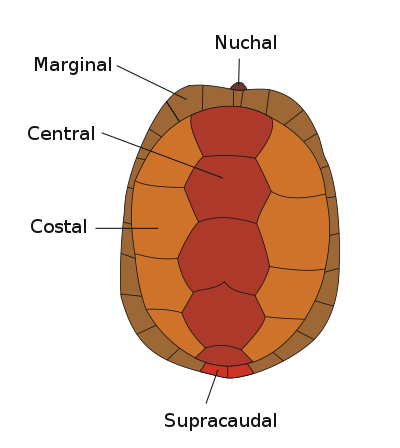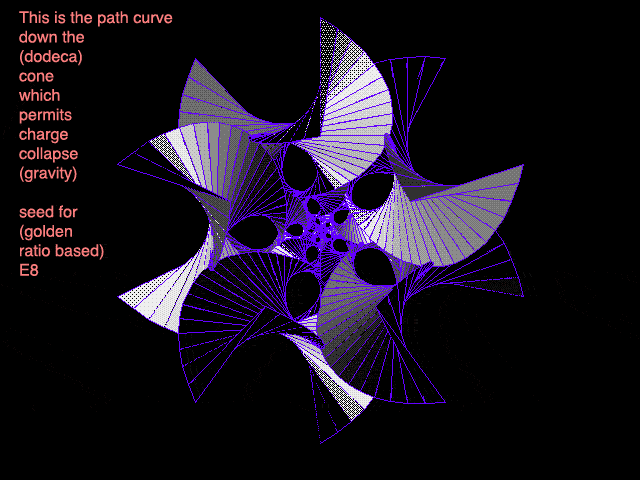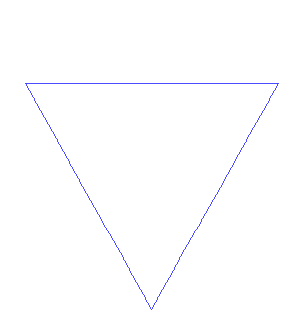A direct link to the above video is at http://www.youtube.com/watch?v=UTtGcNk7Rhs
 Six is an interesting number that we haven't talked about as much recently with this project. Coincidentally, last week we looked at Philip Zimbardo's The Secret Powers of Time, where he suggested that there are six possible ways for people to interface with time: awareness tends to be oriented towards positive or negative versions of past, present, or future.
Six is an interesting number that we haven't talked about as much recently with this project. Coincidentally, last week we looked at Philip Zimbardo's The Secret Powers of Time, where he suggested that there are six possible ways for people to interface with time: awareness tends to be oriented towards positive or negative versions of past, present, or future.
With my approach to visualizing the dimensions, our universe has six dimensions to express all possible versions of itself, and all of that becomes a single "point" in the seventh dimension: we looked at this most recently in "Our Universe as a Point". A couple of years ago here at the Imagining the Tenth Dimension blog, in an entry called Time is a Direction, I had this to say about the number six:


"Do a google search on the words 'six directions' and you will see how deeply embedded that concept is into various spiritual/metaphysical systems. Do a google search on 'six dimensions' and you will find an interesting mix of musings about business/social connections (the six degrees of separation concept), geometry/physics, and other discussions about the nature of reality from the viewpoint of ancient spiritual systems."

 In Three Becomes One, we looked at various geometric patterns that can be derived from the triangle, and the images we're looking at here come from the wikipedia article on hexagons, which are six-sided polygons. The image at left is a hexagram, created by superimposing two triangles. A six-sided hexagon appears in the middle of this shape, and can also be created if you draw new lines joining the six outer points of this shape.
In Three Becomes One, we looked at various geometric patterns that can be derived from the triangle, and the images we're looking at here come from the wikipedia article on hexagons, which are six-sided polygons. The image at left is a hexagram, created by superimposing two triangles. A six-sided hexagon appears in the middle of this shape, and can also be created if you draw new lines joining the six outer points of this shape.As you'll see if you spend some time examining the different patterns shown above, the idea of triangles being pushed apart from a central point into a symmetrical pattern from which other shapes emerge can be seen time and again in these images, and of course all of this is old hat to fans of sacred geometry.

 The six-sided hexagon is not just an abstract concept from your geometry class: it appears in nature as well. Here are some pictures demonstrating that.
The six-sided hexagon is not just an abstract concept from your geometry class: it appears in nature as well. Here are some pictures demonstrating that.First of all, one of the most obvious ones: the hexagons of a beehive's honeycomb. Then, the six-sided scutes of a turtle's carapace.

 Next, at left we see a North polar hexagonal cloud feature on Saturn, discovered by Voyager 1 and confirmed in 2006 by Cassini; and at right we see naturally formed basalt columns from Giant's Causeway in Ireland.
Next, at left we see a North polar hexagonal cloud feature on Saturn, discovered by Voyager 1 and confirmed in 2006 by Cassini; and at right we see naturally formed basalt columns from Giant's Causeway in Ireland.Hexagons also appear in snowflakes, and even at the molecular level in various compounds.
In Are Animals and Kids More Fifth-Dimensional?, we discussed something that can be connected to The 5th-Dimensional Camera Project, which is a more recent entry looking at one of the central ideas to my project which has now received some support from scientists at Oxford University: the fifth dimension can be thought of as our probability space. The wave function of potential pasts and futures that connect to our "now" is a pattern in the fifth dimension which we are potentially connected to through chance and choice, Everett's Many Worlds.
Being able to see fifth-dimensionally, then, would be to see all the possible world lines that are causally connected to a particular instant of our spacetime universe. And someone who is more connected to the past and future through intuition, inspiration, creativity, deja vu, clairvoyance, and so on, could be said to have a more fifth-dimensional awareness.
Seeing sixth-dimensionally, on the other hand, would be seeing all the possible versions of the universe you are within, including the versions that are not causally connected - like the one where you pop out of existence here and reappear on the moon, or the one where it's 2010 and Michael Jackson is still alive. The sixth dimension is the complete Quantum Field for our unique universe, including those outcomes which we acknowledge must exist as possible versions, but which would take longer than the existence of the universe for us to observe. Can any living creatures see sixth-dimensionally?
Here's an article sent to me by my friend Ian Reclusado of the always interesting blog Reclusland. The article is called Honeybees are Found to Interact with Quantum Fields.
In this article, we see a fascinating theory proposed by Barbara Shipman, a mathematician at the University of Rochester. Dr. Shipman analyzed the complex dance patterns bees use to indicate the position of new sources of food to each other. She discovered that the geometric patterns the bees use in the dance made sense if they were analyzed using a "sixth dimensional flag manifold", an analysis method also useful in solving some of the mathematical problems that arise in dealing with quarks. Please read the entire article, it presents some amazing insights.
According to many sources there are now 30% less honeybees in the world than there were in 2006. Are bees more sixth-dimensional? Perhaps they are. Why, then, have bees been disappearing from our planet in record numbers for the last four years? That's an intriguing question, and the subject of a number of books that have come out in the last year, including Fruitless Fall, The Hive Detectives, and A World Without Bees. Are bees our sixth-dimensional canaries in a coalmine, warning us about environmental catastrophes that we need to avoid, and that in some sixth-dimensional versions of our universe, have already not avoided?
We'll continue this exploration next time as we talk about a new company exploring the world of connected ideas, who are using a honeybee as their logo: 6things.com .
Enjoy the journey,
Rob Bryanton





























